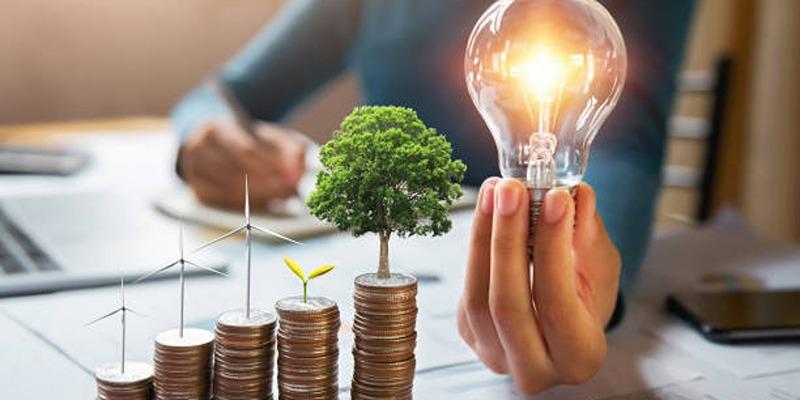12 Effective Strategies to Save Energy and Reduce Costs
Aug 31, 2024 By Susan Kelly
In todays world, saving energy is not just about reducing costsits also about conserving resources and protecting the environment. Whether you're a homeowner looking to lower your utility bills or a business aiming to improve efficiency, there are numerous strategies you can implement to save both energy and money. This guide explores twelve effective ways to achieve these goals.
12 Effective Ways to Save Energy and Money
Adopting energy-saving practices can greatly lower your expenses while promoting a more sustainable future. By incorporating these strategies, you'll not only boost your savings but also make a meaningful contribution to the environment.
1. Upgrade to Energy-Efficient Appliances
Upgrading to energy-efficient appliances is one of the most effective ways to save both energy and money. Modern appliances like refrigerators, washing machines, and dishwashers are engineered to use significantly less energy than older models. When shopping, look for the ENERGY STAR label, which signifies that the appliance meets rigorous energy efficiency standards. While the initial cost may be higher, the long-term savings on energy bills typically outweigh these expenses, resulting in considerable savings over time.
2. Optimize Your Heating and Cooling Systems
Heating and cooling represent a substantial portion of household energy consumption. To enhance the efficiency of these systems, begin by scheduling regular inspections and maintenance for your HVAC (heating, ventilation, and air conditioning) system conducted by a professional. Implementing simple strategies, such as replacing air filters, sealing ducts, and utilizing programmable thermostats, can yield significant savings. Programmable thermostats enable you to adjust temperatures according to your schedule, minimizing energy usage when youre away from home.
3. Improve Insulation and Seal Drafts
Effective insulation is crucial for maintaining a comfortable indoor climate and minimizing energy consumption. By insulating your home, you can prevent heat loss during winter and retain cool air in summer. Prioritize insulation in key areas such as the attic, walls, and floors. Additionally, seal any drafts around windows, doors, and other openings to stop warm or cool air from escaping. This not only reduces energy usage but also enhances overall comfort.
4. Switch to LED Lighting
Lighting is a key area where simple changes can lead to significant energy and cost savings. Traditional incandescent bulbs are less efficient and consume more energy than LED (light-emitting diode) bulbs. In contrast, LED bulbs use a fraction of the energy and boast a longer lifespan, resulting in fewer replacements and reduced electricity bills. To maximize your savings, consider replacing all incandescent and CFL (compact fluorescent lamp) bulbs with LED alternatives.
5. Utilize Smart Power Strips
Many electronic devices consume power even when they are turned off, a phenomenon referred to as phantom or standby power. Smart power strips can effectively address this issue by automatically cutting off power to devices that are not in use. By utilizing smart power strips, you can minimize unnecessary energy consumption from items like televisions, computers, and chargers, resulting in significant savings on your electricity bill.
6. Practice Energy-Efficient Water Heating
Water heating represents a significant energy expenditure. To enhance efficiency, consider setting your water heater's thermostat to 120F, as this temperature meets most needs while lowering energy consumption. Additionally, insulating your water heater and pipes can effectively maintain temperature and minimize heat loss. For those seeking long-term savings, investing in a high-efficiency or tankless water heater can lead to further reductions in energy usage and costs.
7. Incorporate Renewable Energy Sources
Investing in renewable energy sources like solar panels can greatly decrease your dependence on traditional energy providers and lower your utility costs. Solar panels harness sunlight to generate electricity, powering your home or business effectively. Although the upfront installation costs may be significant, there are often various incentives and rebates available that can offset these expenses. Moreover, the long-term savings on energy bills can be considerable. Additionally, utilizing renewable energy supports environmental sustainability by reducing greenhouse gas emissions.
8. Adjust Your Daily Habits
Simple daily habits can greatly influence energy consumption. For example, turning off lights when leaving a room, unplugging chargers and devices when theyre not in use, and utilizing energy-efficient settings on appliances can all contribute to reducing energy bills. Furthermore, washing clothes in cold water and air-drying them whenever possible saves more energy than using hot water and a dryer.
9. Implement Smart Home Technology
Smart home technology provides innovative solutions to boost energy efficiency. Devices like smart thermostats, advanced lighting systems, and energy monitoring tools enable you to manage and track your energy consumption more effectively. For instance, smart thermostats can adapt to your preferences, adjusting settings to optimize energy usage according to your lifestyle. By investing in smart home technology, you not only enhance your energy management but also realize significant savings.
10. Enhance Your Homes Energy Efficiency
Beyond individual upgrades, it's beneficial to conduct an energy audit to pinpoint specific areas where your home may be losing energy. Professional energy auditors utilize specialized tools and techniques to provide a comprehensive assessment of your homes energy performance. They may analyze insulation levels, check for air leaks, and evaluate the efficiency of your heating and cooling systems.
Common recommendations from these audits might include upgrading windows and doors to double or triple glazing, adding insulation in the attic and walls, or sealing leaks around windows, doors, and ducts. Not only can addressing these issues lead to significant energy savings, but it also creates a more comfortable and consistent living environment throughout the year, reducing drafts in winter and keeping your home cooler in summer.
11. Opt for Energy-Efficient Landscaping
Energy-efficient landscaping plays a crucial role in reducing energy and cost savings. By strategically planting trees and shrubs around your property, you can create a natural barrier that provides shade during the hottest months and wind protection during the coldest ones. For instance, tall deciduous trees can effectively block the intense summer sun while allowing the lower-angle winter sunlight to warm your home, thus lessening your reliance on air conditioning and heating systems.
Incorporating native and drought-resistant plants into your landscape design minimizes water consumption and reduces the need for energy-intensive irrigation systems. Properly designed irrigation systems can optimize water usage, further lowering energy use associated with water delivery and disposal.
12. Adopt Sustainable Transportation Methods
Transportation is a significant source of energy consumption and greenhouse gas emissions, contributing heavily to climate change. To reduce your overall environmental impact, consider adopting sustainable transportation methods whenever possible. Carpooling with colleagues or friends not only lowers the number of vehicles on the road but also significantly cuts down on fuel expenses and emissions. Biking, walking, and utilizing public transportation are excellent alternatives that promote healthier lifestyles while being environmentally friendly.
For those who still need to drive, maintaining your vehicle in good condition, utilizing fuel-efficient driving techniques, and opting for hybrid or electric vehicles can further minimize fuel consumption and overall costs. By adopting these methods, you not only contribute to a healthier planet but also often find improvements in your personal well-being and financial savings.
Conclusion
Implementing these twelve strategies can lead to substantial savings on energy and money while contributing to a more sustainable future. From upgrading appliances and optimizing heating and cooling systems to adopting renewable energy sources and adjusting daily habits, each step plays a crucial role in reducing energy consumption. By taking a proactive approach and integrating these practices into your routine, you can achieve significant long-term benefits for both your wallet and the environment.
-
 Banking Oct 18, 2023
Banking Oct 18, 2023All You Need to Know Before Giving the Best Debit Cards to Teens
Teenage debit cards let teens master the basics of managing money without the danger of paying high charges for overdrafts or falling into financial debt with credit cards. It is possible to set up payment plans for chores, track the amount you spend, set expending limits, transactions, and much more using the simplicity of a mobile application.
-
 Investment Oct 11, 2023
Investment Oct 11, 2023Best Mutual Funds Around There
When it relates to considerable mutual funds, Vanguard retained its position as the industry leader in 2021. We have listed the five most influential organizations.
-
 Banking Nov 12, 2023
Banking Nov 12, 2023What Is Available Credit? A Complete Guide
The amount of money a borrower still has to spend is the amount of credit they have left. This amount can be found by taking the total credit limit on the account and subtracting the amount the borrower has already spent. Your credit card company gives you a credit limit, the most money you can owe at any given time.
-
 Investment Jan 10, 2024
Investment Jan 10, 2024Discussing the Best Consumer Staples ETFs
Products that are "consumer staples" are ones that people consistently use. In general, the industry does well when markets are down. This article will examine the top exchange-traded funds (ETFs) focused on consumer staples. Products classified as "consumer staples" are those that shoppers rarely go without, regardless of their income level or the economy's health.
